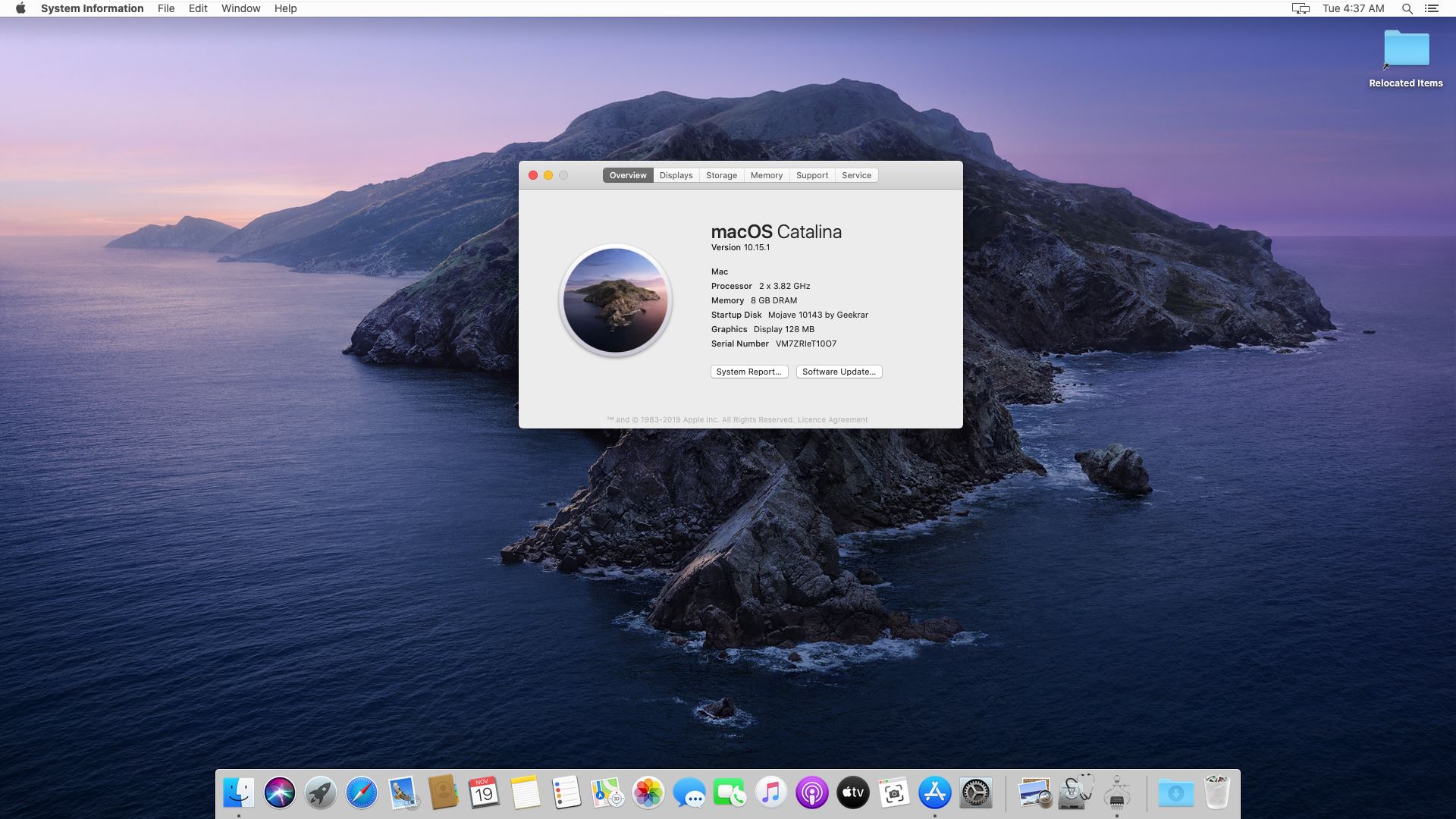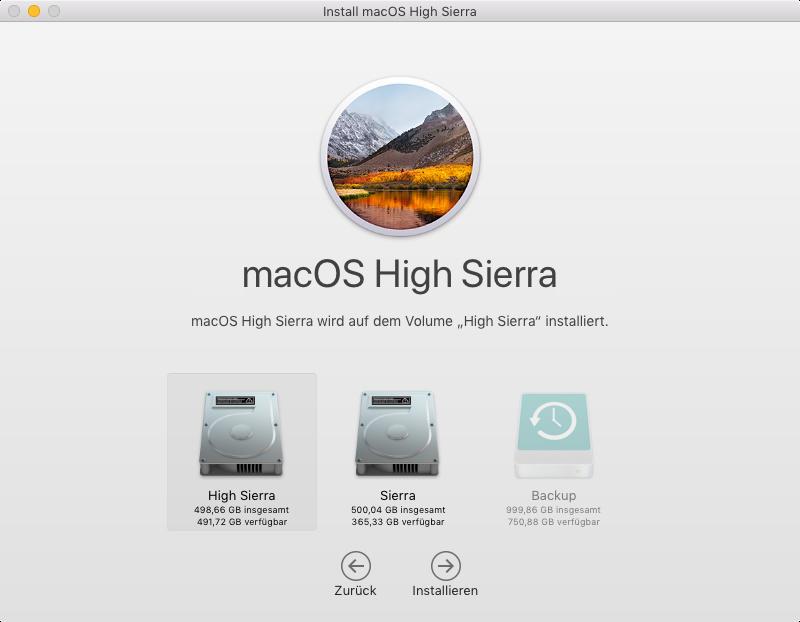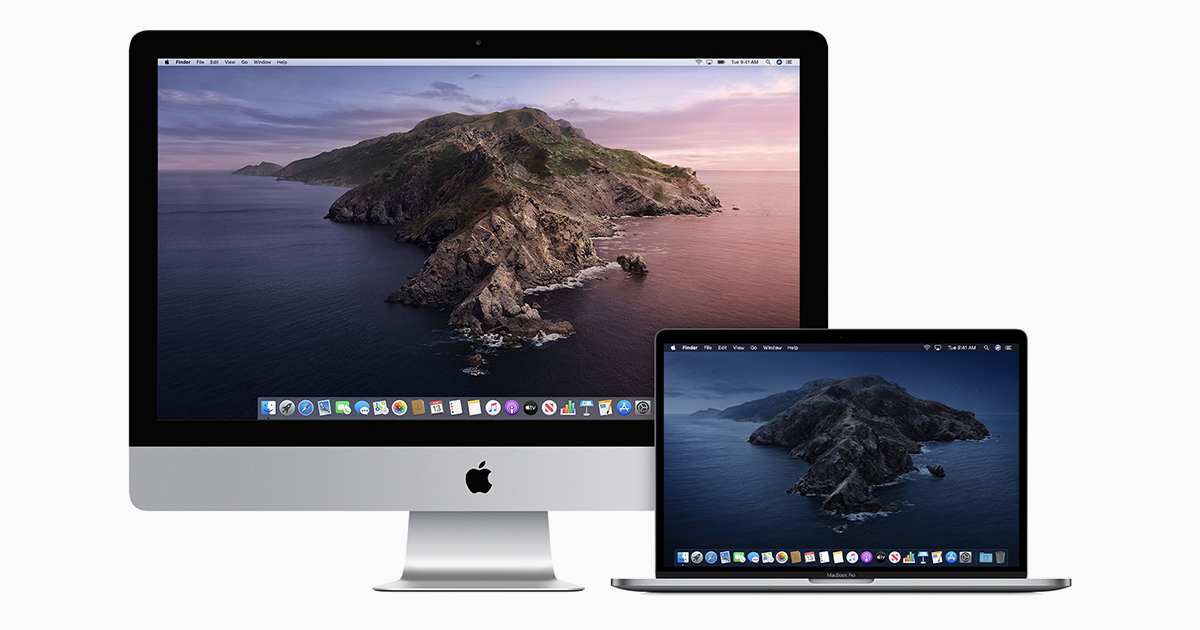The upgrade install merges the new macOS Catalina with your existing Mac OS. This is the upgrade method we will cover in this Rocket Yard guide. Before we begin the upgrade process, a few tips and notes about macOS Catalina and what you need to do to be ready for the install on your Mac. Upgrading from older versions of OS X. Macs using OS X 10.7 through 10.10 must first upgrade to OS X 10.11 El Capitan before updating to macOS 10.15 Catalina. Go to the OS X 10.11 El Capitan download page to get it. Open the System Preferences menu and select Software Update.
- Upgrading from macOS Catalina 10.15 or Mojave 10.14? Go to Software Update in System Preferences to find macOS Big Sur. Click Upgrade Now and follow the onscreen instructions. Upgrading from an older version of macOS? If you’re running any release from macOS 10.13 to 10.9, you can upgrade to macOS Big Sur from the App Store.
- MacOS Catalina for PC and Mac. Written by Apple. Category: Utilities Release date: 2020-09-24 Licence: Free Software version: 10.15.7 File size: 4.56 GB Compatibility: Available on Windows 10, Windows 8.1/8, Windows 7, Windows Vista and Mac OS 10-11 10.9.
On this page:
Upgrading Macs to to the latest OS is a two-step process. Since the OS installers are several GB, it's recommended to download them locally prior to installing, then using a second policy to run the local installer.
Upgrading to macOS Big Sur
You will need to create a smart group and two policies to upgrade machines to Big Sur.
Smart Group: macOS Big Sur installer present
- Criteria - Application Title is Install macOS Big Sur.app
Policy 1: Deploy the installer
- Create a new policy. Under General, set the trigger to Recurring Check-in, and set the execution frequency to Once per computer.
- Under Files and Processes, enter `jamf policy -event euc-install-bigsur` in the Execute Command field.
- Under Scope, add whichever computers you want to prepare for upgrade.
- Result: The scoped machines will cache the installer the next time they check in (usually within 30 minutes). Note: machines that already have the latest Big Sur installer present in /Applications are excluded from this policy.
Policy 2: Run the installer
Note: These steps will only work on Intel Macs. On Apple Silicon Macs, there is no way to kick off the installer without explicit user authorization.
- Create a second policy. This will run the pre-deployed installer, immediately restarting to begin the upgrade. Because this is immediate, it's recommended to only run this via Self Service and display a warning message to the user.
- Under Scripts, add the 11 - Upgrade to Big Sur script.
- Under Self Service, check the Make available in Self Service box and the Feature the policy on the main page box.
- Under Self Service, it is recommended to add a description warning that it will instantly reboot, and checking the Ensure that users view the description checkbox.
- Set Scope to the above created smart group, macOS Big Sur installer present
- Optional: Under Scope > Limitations, add select authorized kerberos users or Moira groups. For example, you could set this to only desktop support technicians, so end users will not upgrade on their own accidentally.
Os X 10.9.5 Upgrade To Catalina
Upgrading to macOS Catalina
You will need to create a smart group and two policies to upgrade machines to Catalina.
Smart Group: macOS Catalina installer present
- Criteria - Application Title is Install macOS Catalina.app
Policy 1: Deploy the installer
- Create a new policy. Under General, set the trigger to Recurring Check-in, and set the execution frequency to Once per computer.
- Under Files and Processes, enter `jamf policy -event euc-install-catalina` in the Execute Command field.
- Under Scope, add whichever computers you want to prepare for upgrade.
- Result: The scoped machines will cache the installer the next time they check in (usually within 30 minutes). Note: Note: machines that already have the latest Catalina installer present in /Applications are excluded from this policy.
Policy 2: Run the installer
- Create a second policy. This will run the pre-deployed installer, immediately restarting to begin the upgrade. Because this is immediate, it's recommended to only run this via Self Service and display a warning message to the user.
- Under Scripts, add the 10.15 - Upgrade to Catalina script.
- Under Self Service, check the Make available in Self Service box and the Feature the policy on the main page box.
- Under Self Service, it is recommended to add a description warning that it will instantly reboot, and checking the Ensure that users view the description checkbox.
- Set Scope to the above created smart group, macOS Catalina installer present
- Optional: Under Scope > Limitations, add select authorized kerberos users or Moira groups. For example, you could set this to only desktop support technicians, so end users will not upgrade on their own accidentally.
Contact
- If you need assistance creating policies or have any questions, please contact the End User Computing team at euc-help@mit.edu.
macOS Catalina was the newest operating system by Apple until macOS Big Sur succeeded it in 2020. If your Mac still runs Mojave or an even older macOS version, you'll be amazed by all the new features and improvements in Catalina. So here’s how to upgrade to macOS Catalina.
First, clear out the junk
When you do a regular upgrade, the installer replaces some files on your Mac with others, but leaves most untouched. That means that all the system junk your Mac has accumulated over the years stays there. And as you upgrade year after year, you accumulate more and more. As you can imagine, upgrading your operating system on a junk-filled Mac is rather like putting one layer of wallpaper on top of another — eventually you have to scrape it off and start again.
Likewise, it’s always a good idea to clear out the clutter before you upgrade. My recommendation, after years of experience upgrading Macs, is that you use CleanMyMac X. It’s very quick and easy to use and will get rid of clutter, making your Mac run more smoothly and freeing up tens of gigabytes of disk space. You can either let it decide what to remove or go through its scan results yourself and decide what to trash and what to keep.
Then, backup your Mac
As you will see below, there are a couple of different ways you can upgrade to Catalina, but before you decide, and certainly before you upgrade, you should make a full backup of your current Mac setup. Upgrading one OS on top of another carries very few risks, but they are not non-existent so be safe now rather than sorry later. If you use Time Machine you can make a backup with that. But the best idea is to make a complete bootable clone of your current startup disk on an external drive.
To clean install or not to clean install
Remember I said you had a couple of options for upgrading? Here they are:
Upgrade Mac Os X To Catalina
- Regular install
- Clean install
A regular install places Catalina files on your startup disk over the top of whatever OS you’re currently running. It doesn’t overwrite anything else. So all your applications, documents, settings, photos, movies, and music stay where they are. Unfortunately, all the junk files your Mac has accumulated also remain there. This option is quicker in the short-term, but your Mac won’t run as smoothly in the long-term. If you choose this option, I’d definitely recommend you use CleanMyMac X to clear out the clutter, before you upgrade.
A clean install erases your startup disk completely and then installs macOS Catalina on a completely clean disk. It takes longer, but in the long run your Mac will run more quickly and more smoothly. You will have to clone your startup disk before you start, and then spend time reinstalling applications and setting them up afterwards, however.
How to do a regular install of macOS Catalina
- Check that your Mac can run Catalina. Here’s the list of compatible Macs:
MacBook 2015 and later

MacBook Air 2012 and later
MacBook Pro 2012 and later

IMac 2012 and later
IMac Pro 2017 and later
Mac Pro 2013 and later

2. Make sure you’re connected to the internet and have a reliable connection. If you’re using a MacBook, MacBook Air, or MacBook Pro, plug it into mains power.
3. Launch the App Store app on your Mac and search for 'macOS Catalina.'
4. When you find it, click 'Get.'
5. Wait for Catalina to download and when it’s ready to install, click Continue. Type in your admin username and password, if necessary.
6. Wait for Catalina to install. Your Mac will restart several times and it may take a while, so be patient! If you are using a laptop, don’t close the lid.
7. Once it has finished installing, you can continue to use your Mac as normal.
How to clean install macOS Catalina
We have covered clean installing Catalina in more detail in this article How to Clean Install macOS Catalina but here’s a summary.
- Make a full bootable clone of your Mac, just in case the worst happens.
- Grab a USB stick that’s at least 16GB capacity, or an external hard drive or USB stick.
- Erase and re-format the USB stick or external disk.
- Create a bootable installer on the disk.
- Boot from the new install disk and use Disk Utility in macOS Utilities to erase your startup disk.
- Go back to macOS Utilities and choose install macOS, with your startup disk as the location for the install.
Once it’s finished, set up your Mac, reinstall applications and restore your settings.
My apps are slow or stopped working on macOS Catalina
Okay, you’ve successfully installed macOS 10.15 Catalina. But some of your apps are no longer available. That’s a heavy blow from macOS Catalina as it no longer supports 32-bit apps. According to Apple, 64-bit apps are more memory-efficient than 32-bit ones. But for most of us it means we will lose many favorite games and applications, including Photoshop CS. To minimize the damage, you should first check how many 32-bit apps you have. It's possible to do with the same Mac maintenance app we've mentioned above.
- Run CleanMyMac X — you can download a free edition here.
- Click the Uninstaller tab.
- Now, by clicking on the 32-bit tab, you will see the list of 32-bit apps on your Mac.
Next up, click the Updater tab.
Here you can update your 32-apps (and all the rest of apps) to newer versions. Many developers have already optimized their software for 64-bit architecture. With this method you’ll update all your software in one-go to make it Catalina-friendly. As you can see, I can update 17 apps with just one button.
Thanks for reading this article. Hope you will like it on Catalina!